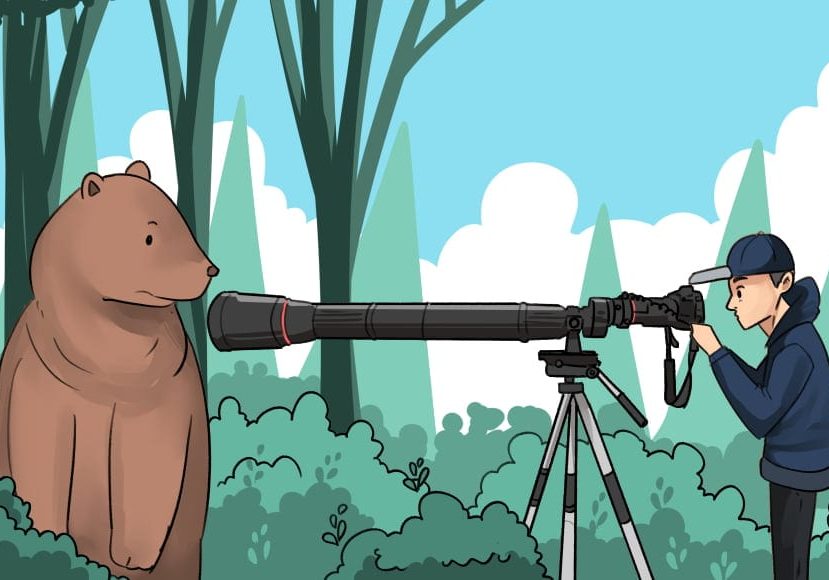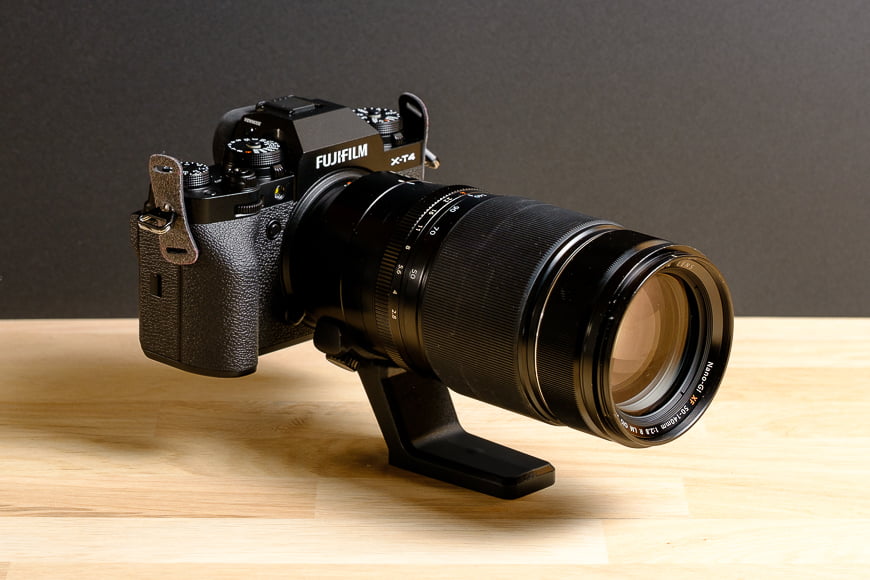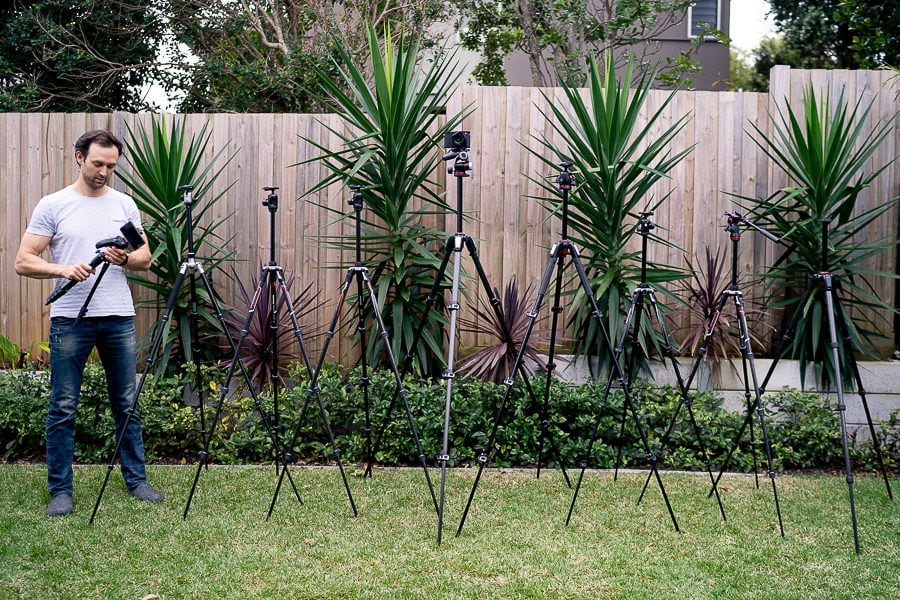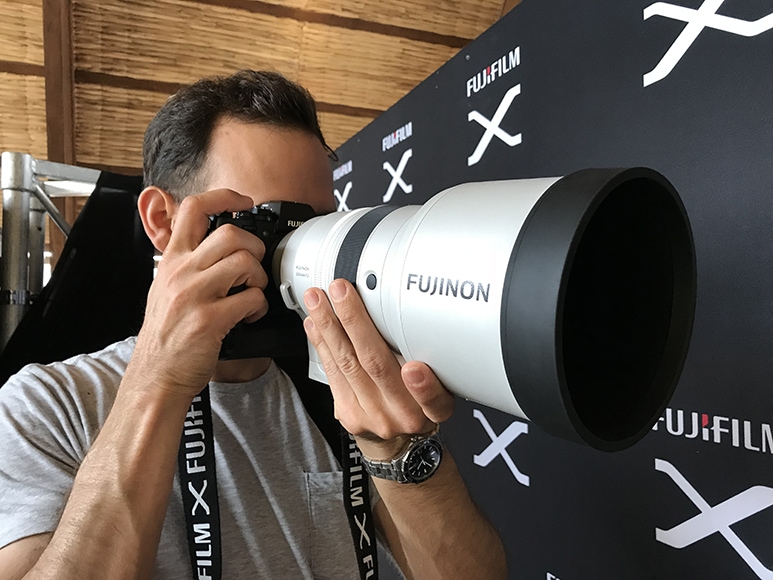
Guide to Long Lens Photography
Want to learn about telephoto lenses? From different types to best tips, this guide to long lens photography covers all you need to know!
Learn | Photography Guides | By Greg Cromie
In this guide to long lens photography we’re going to take a long look (pardon the pun) at everything there is to know about the topic.
Some sites and fellow photographers will tell you that you only need a long lens if you shoot sports or wildlife.
While it will undoubtedly make a difference in those genres, there are a lot of other reasons to invest in zoom lenses or a long fixed prime.
With a long lens, you can capture amazing shots covering everything from flattering portraits to candid snaps from a distance.
Let’s take a look.
What is Considered a Long Lens?

Lenses come in all shapes and sizes, and understanding the differences will mean you don’t get tricked at the camera store.
As for what’s considered a long lens, these are physically much bigger than your average kit lens and cover a greater focal length.
What is meant by focal length? The focal length is how much range a lens covers, and it’s always measured in millimeters.
More precisely, it tells us the optical distance between the focal plane of the camera sensor and the point where the light rays converge to capture crisp focus.
Prime lenses have a single fixed focal length and can range from as little as 8mm to upwards of 800mm. A typical prime could be 35mm, 85mm or 200mm.
A zoom lens has a variable distance. A popular example is an 18-55mm kit lens or a handy 24-70mm zoom.
The length also tells us the style of the lens and the types of images it will capture. Lenses with a short focal distance such as 12mm or 16mm are wide-angle lenses.
Wide-angle lenses deliver a far wider composition or field of view. Foreground subjects appear a little wider than reality and appear to be further away than they are.
A long lens such as 80mm, 135mm or 200mm has a narrower field of view. Plus, any subjects in your composition can appear very close to the camera.
A telephoto or long lens falls into the latter category of having a longer focal length. The longer the length, the closer the subject will appear to the camera – this is a magnification effect.
The composition compresses with a narrow field of view and minimal distortion. These lenses tend to be larger in physical size due to their complex arrangement of internal glass lens elements.
These elements sit in groups, and they work in unison to magnify the view without any sign of distortion or serious aberration.
Types of Long (Telephoto) Lens

Fujifilm X-T4 with a 50-140mm attached.
Fortunately, the monster 800mm lens that costs tens-of-thousands of dollars isn’t your only choice.
There’s a range of long lenses fit for a multitude of photography genres represented in groups defined by their focal length. (Be sure to also check out our telephoto lens guide too.)
- Short Telephoto
This can be any zoom or prime with a focal distance between around 85mm and 135mm.
How Much Do You REALLY Know About Photography?! 🤔
Test your photography knowledge with this quick quiz!
See how much you really know about photography...

These make for great companions when away on holiday. They provide good reach, magnifying the subject to get an image that’s clearer and appears closer to the camera.
Plus, they tend to be less heavy than their longer counterparts.
Telephotos also provide a greater level of compression in portraiture, meaning that you can frame your subject and achieve clean separation from the background. They’re also handy for dance photography, event photography or fashion photography, if you find yourself stuck in the seats next to the catwalk.
- Medium Telephoto
This refers to 135mm – 300mm focal length lenses.
With one of these, you’ll comfortably capture sports, wildlife, documentary shots without having to chase a subject with your feet.
In sports photography, a medium telephoto allows you to capture all of the action from the sidelines. The same applies to wildlife photography, where you can photograph animals from a distance without disturbing their environment.
- Super Telephoto
The final sub-category contains the super-telephoto beasts – I call them beasts as these are usually larger and heavier than any other lens.
These lenses have a reach of 300mm and above. That’s right – the 800mm lens I mentioned earlier is no joke.
Their size and weight ensure they include a fitted bracket for attachment to a monopod or tripod. You mount the lens to the tripod and not the camera body.
Photographers use super telephotos for serious shooting where you want insane levels of up-close detail.
In wildlife, for example, these get you up close and personal with the most aloof creatures.
Telephoto Lenses & Sensor Size

APS-C Sensor of the Fujifilm X-T4.
It’s important to understand that different sensors affect the focal length of a telephoto lens.
A full-frame sensor is the gold-standard for all photographic measurements; it’s the equivalent to a 35mm film camera (the old gold-standard).
With a full-frame camera, you achieve a 1x magnification ratio with a 50mm lens. When it comes to using a longer lens on a full-frame camera, this magnification multiplies. So 100mm would have a 2x magnification, and 200mm would have 4x.
In other words, the magnification is the focal length divided by 50.
However, some sensors are smaller than full-frame (called cropped-sensors). The two standard cropped sensors are APS-C and Mirco Four Thirds.
With a cropped sensor, the captured image is cropped around the edges as the sensor is not big enough to capture the full frame seen by the lens.
Crop sensors result in the subject appearing to be even closer to the camera than with a full-frame sensor.
APS-C cameras have a crop factor of 1.5x, and a Micro Four Thirds camera has a crop factor of 2x – turning a 200mm lens into a 400mm equivalent.
9 Tips for Using Longer Lenses

Before you even step into the field with a camera, it’s essential to know how to shoot with this type of lens.
These tips will ensure you get the most out of your long lens. What’s more, you need to understand that shooting with a long lens has some critical differences to shooting with other lenses.
1. Long Lenses and Shutter Speed
One of the most important aspects of shooting with a longer lens is to have the right shutter speed.
Imagine holding your arm out straight in front of you with a heavy rock in your hand – you have to hold that rock entirely still.
Before long your arm gets fatigued and begins to shake. Eventually, you’ll drop it.
Replace that rock with a combo that weighs around 1.5kg or 3.3lb. The weight is in the front end of the lens and holding it up steady for long periods is challenging.
Ultimately, camera shake is going to be inevitable.
The first step in battling this is to control shutter speed – a faster shutter speed than normal mitigates the effects of camera shake.
Generally, if your conditions demand you shoot at 1/125, crank it up to 1/250 to ensure sharp images.
A more straightforward rule is to apply a shutter speed that’s faster than the focal length. For example, if you you’re shooting at 200mm, then you should shoot with a shutter speed of 1/200 or higher.
2. Image Stabilization

Canon 6D with 70-200mm f/2.8 IS II
There are two forms of image stabilization:
The first is built into the camera and is known as In Body Image Stabilization (IBIS).
The second is the Image Stabilization (IS) modes that feature on many lenses, especially longer ones (such as in the example above).
Note that different manufacturers may have their own names for these functions.
Lens image stabilization allows you to shoot with a longer lens and minimise camera shake, in order to work at slower shutter speeds. This is especially handy if you want to capture some form of motion blur or shoot in low light.
Remember, the slower the speed, the more time there is for light to hit the image sensor.
Lenses suited to sports and wildlife photography have more than one form of image stabilization. Rather than a simple on/off switch, they’ll feature a mode switch.
Mode 1 is ideal for everyday shooting where your subjects are not moving around too much. Mode 2 is the amped-up stabilization allowing you to pan your camera to track moving subjects.
Bird and wildlife photographers love this feature as it improves their chances of a clear image.
3. Better Backgrounds

Canon R with 28-70mm f/2
A longer lens compresses the composition – meaning the subject and background appear closer together than they are.
Note the image above shot at 70mm – the father and son in the background have been ‘compressed closer’ to the second son in the foreground, helping to tell the story of this family.
Try shooting with a wide aperture: the subject separation is gorgeous as the subject is crisp while the background is creamy.
You may even have a lens that produces gorgeous bokeh or beautiful background blur.
It’s for this reason that a lot of portrait photographers will go with a long option for photographing their models: the subject separation is defined, and the background looks fantastic.
Some portrait shooters will even use medium telephoto lenses and stand right back away from their subject.
Another benefit to shooting portraits this way is that the natural shape of the face is maintained. Shooting portraits with a wide-angle lens tends to stretch these dimensions.
4. Tripods Are A Must

If you’re shooting sports, wildlife, children or anything that’s on the move, a tripod will save the day.
Sometimes, you need an utterly stable kit, especially in a dark setting that requires a much slower shutter speed.
Mounting your camera to a tripod also allows for smoother panning and stability in slow speeds.
Long lenses are more prone to camera shake than others. While you can increase your shutter speed and switch on image stabilisation, that’s not always enough.
Plus, a tripod takes a lot of the burden of supporting a heavy kit. Alternatively, if you’re after a device to support the weight of your setup, a monopod also works.
Always remember that if you’re mounting your camera to a tripod, switch off stabilisation as this can cause worse camera shake.
5. Zoom With Your Feet
Zooming with your feet is a saying I often use when educating others about street photography.
With a fixed wide-angle lens, I have to walk a few paces to get closer to a subject – there’s no zoom to do the work for you.
This also applies to zooms: while they have a greater reach, they don’t always reach enough.
Or, if you’re shooting with a telephoto prime, you may find you’re far too close to your subject. Having to take a few steps forward or back makes a significant difference to your composition.
Using a 70-300mm telephoto lens to reach distant subjects does not always guarantee a tac-sharp image at either end of the zoom range.
Despite the best efforts of manufacturers, it’s challenging to get edge-to-edge sharpness across the entire focal range.
Such lenses are often sharper in the middle of the range than they are at the ends. If you’re framing a shot and you’re at the extreme end of your zoom’s focal range, take a few steps forward and dial back the zoom to get a sharper picture.
6. Do The ISO Dance
It’s a delicate dance between the right settings for ISO, Shutter Speed and Aperture. The need to master this dance is even more important when shooting with a long lens.
You generally need to use a shutter speed that’s a little higher than usual. And when you’re shooting moving subjects such as birds or cars, the shutter speed can be very high.
However, using faster shutter speeds and a narrower aperture limits the amount of light getting to the camera sensor. To compensate for this and prevent dark images, you need to adjust your ISO.
ISO controls the sensitivity of the light hitting the image sensor. If your ISO is high, you’ll get the greater intensity of light, but the image distorts with a grainy effect known as noise.
That’s why finding the right balance takes practice. The style of photography will also influence how you balance the shutter speed and ISO values.
7. Control Aperture

Nikon D800 with 105mm f/2.8 gives shallow depth of field.
Shooting with a wide aperture to achieve a shallow depth of field is often desirable. Portrait photography is the best example of this where the eyes are super sharp and the focus falls off around the ears and neck.
It’s not always appropriate to do so with a longer lens.
A wide aperture (the smaller F-number) delivers a shallow depth of field or smaller in-focus area. When you want all of your subject in focus, you need to dial in a narrower aperture.
The narrower the aperture (the larger the F-number) the more that will be in focus.
Plus, if you want to achieve the sharpest image possible, it’s worth noting that many zooms are sharper with a slightly narrower aperture.
8. Use The Focus Limiter
A downside of long lenses is they’re not as fast at focusing as their shorter siblings.
The reason for this is the amount of glass contained inside. They also feature tiny motors that shift the glass elements to achieve focus or zoom. As a result, focusing is a little slower.
If you’re shooting a moving subject, you need fast focus, or your subject will move on. Some lenses have what’s known as focus breathing. It’s where the focus breathes in and out as the lens attempts to nail its subject.
Some long lenses feature a focus limiter function that restricts the amount the lens breathes to gain focus.
Just note that if you have this feature activated, and your subject moves out of the restricted area, you won’t be able to focus.
9. Practice Makes Perfect

The Fujifilm Xf 200mm f/2 is quite the beast!
The best advice for shooting with a long lens is to invest in lots of practice.
While lenses are incredibly competent at what they do, they require skill and knowledge to drive their performance and reach their full potential in terms of image quality.
Before you even step out to photograph the local soccer match or capture a hawk in flight, practice, practice, practice.
Take the necessary time to review all that we’ve covered here and test out your gear.
Understand it’s weight and dimensions and your performance at shooting handheld.
Practice fitting your camera to a tripod and panning for tracked subjects. Check the image sharpness at different focal lengths and various apertures.
Only then can you take your long lens out and work your kind of magic.
Final Words
Telephoto or long lenses can be a terrific asset to your photography kit and your creative expression. All of a sudden, you’re able to reach subjects and compositions that were previously unattainable optically.
Most importantly, understand the rules of using longer lenses – and then do your absolute best to find ways to break them.

Check out these 8 essential tools to help you succeed as a professional photographer.
Includes limited-time discounts.













